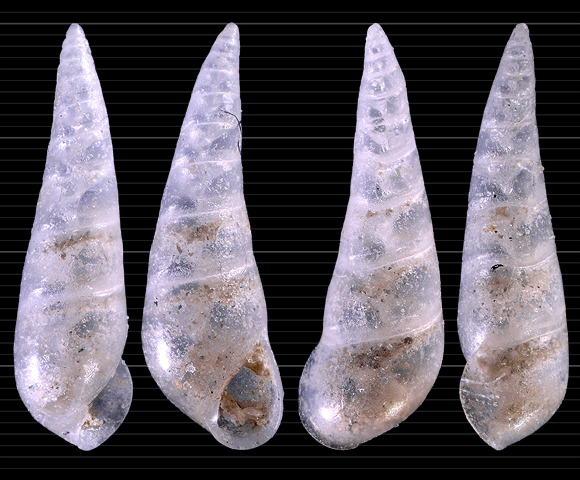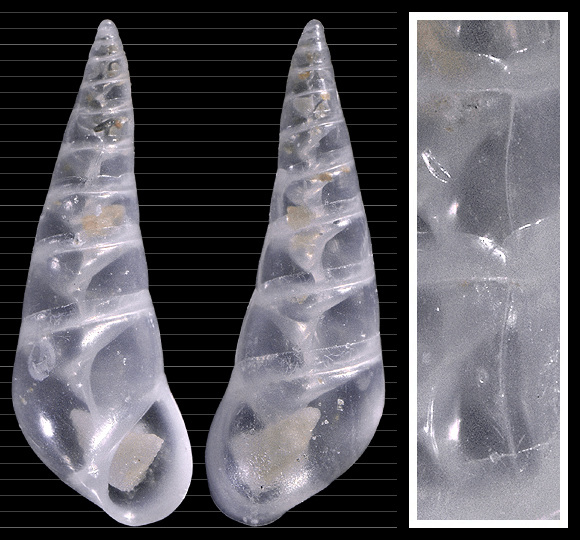(Bucquoy, Dautzenberg & Dollfus, 1883)
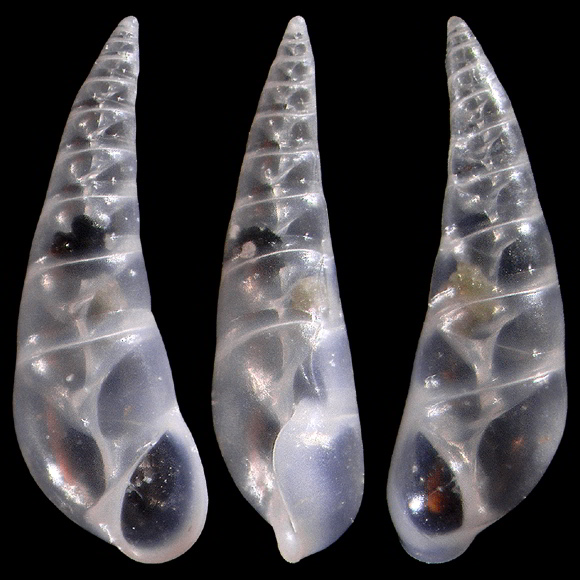
The species is ectoparasite on some sea-urchins. The depth range depends on the host. Original taxon: Eulima incurva.
A key to identification is given by the labial side that does not extend out of the body’s shape.
10-12m deep, shell grit, bottom of sand, Vignola Bay, Marina di davia, Corbara, NW. Corsica. 3mm.
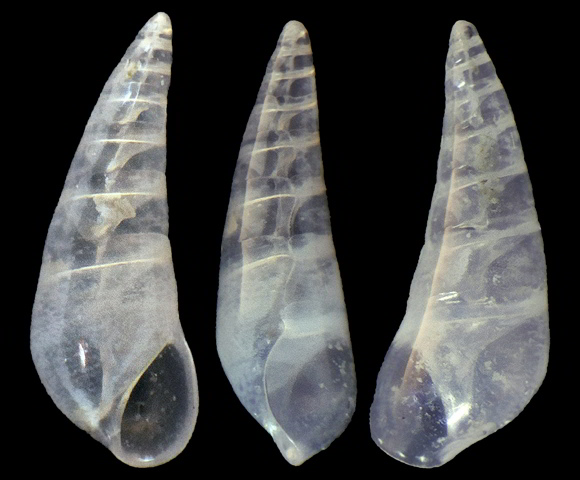
Original pictures provided by S. Clanzig (FR).
– (CC BY-NC-SA) –
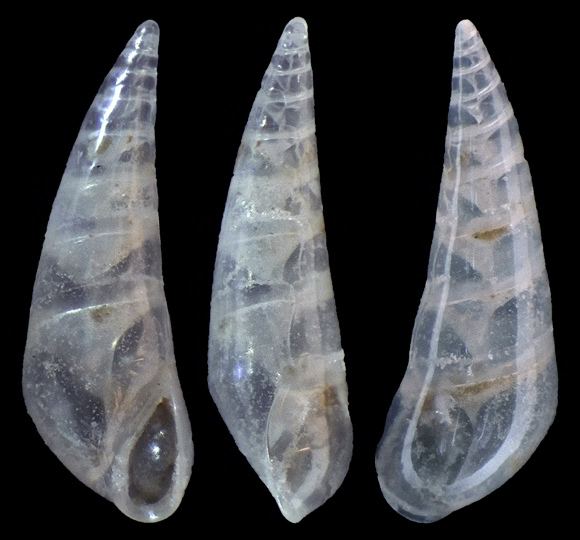
Original pictures provided by S. Clanzig (FR).
– (CC BY-NC-SA) –
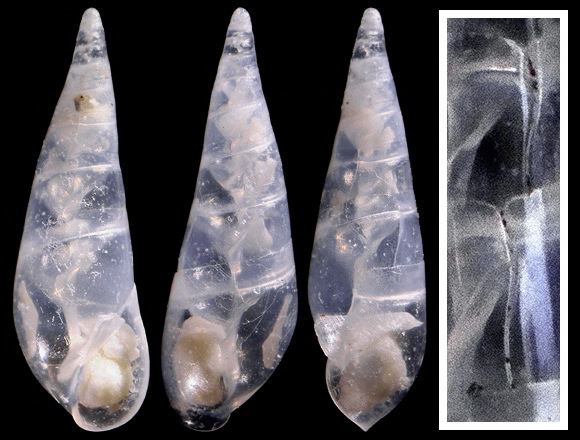
The curvature of the spire is very variable. Notice the V-shape of the labial scar at its beginning near the suture (detail: Leucate, Occitania, provided by S. Clanzig). Notice also how the false suture, which is below the true one, follows the latter: this feature is typical of the genus Vitreolina. In other genera such as Melanella or Eulima, the false suture stays straight.
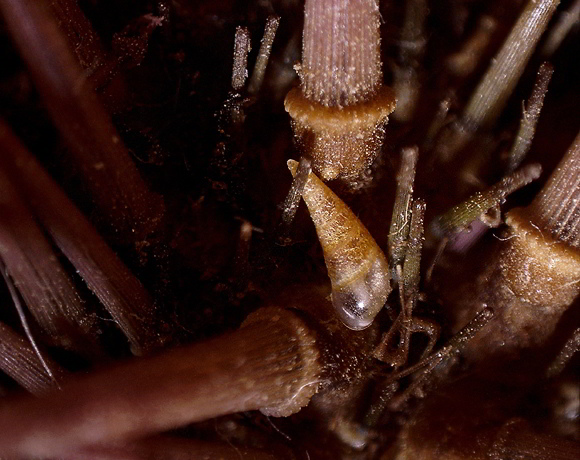
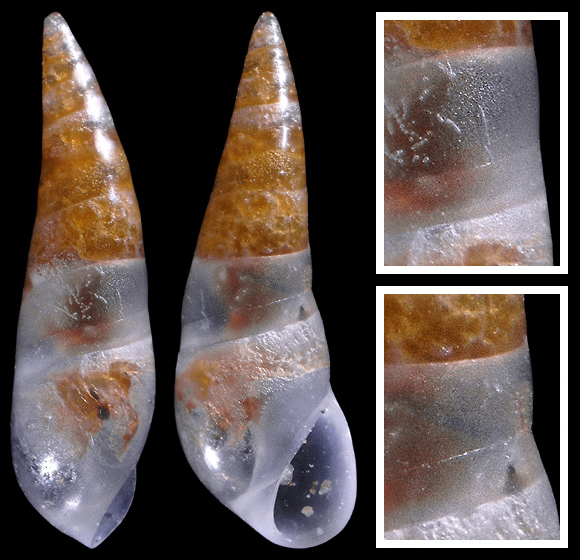
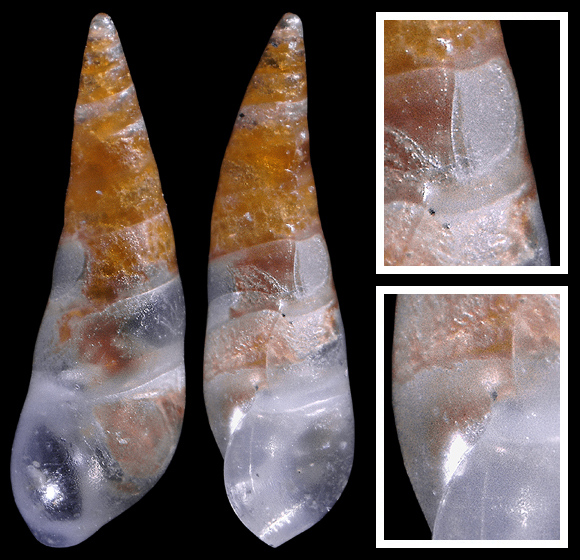
The double curvature is not strictly typical of Curveulima, and might be studied in association with the place of the labial expansion. Here, the latter is placed near the middle of the whorl, while it is placed much more anteriorly in C. devians.
